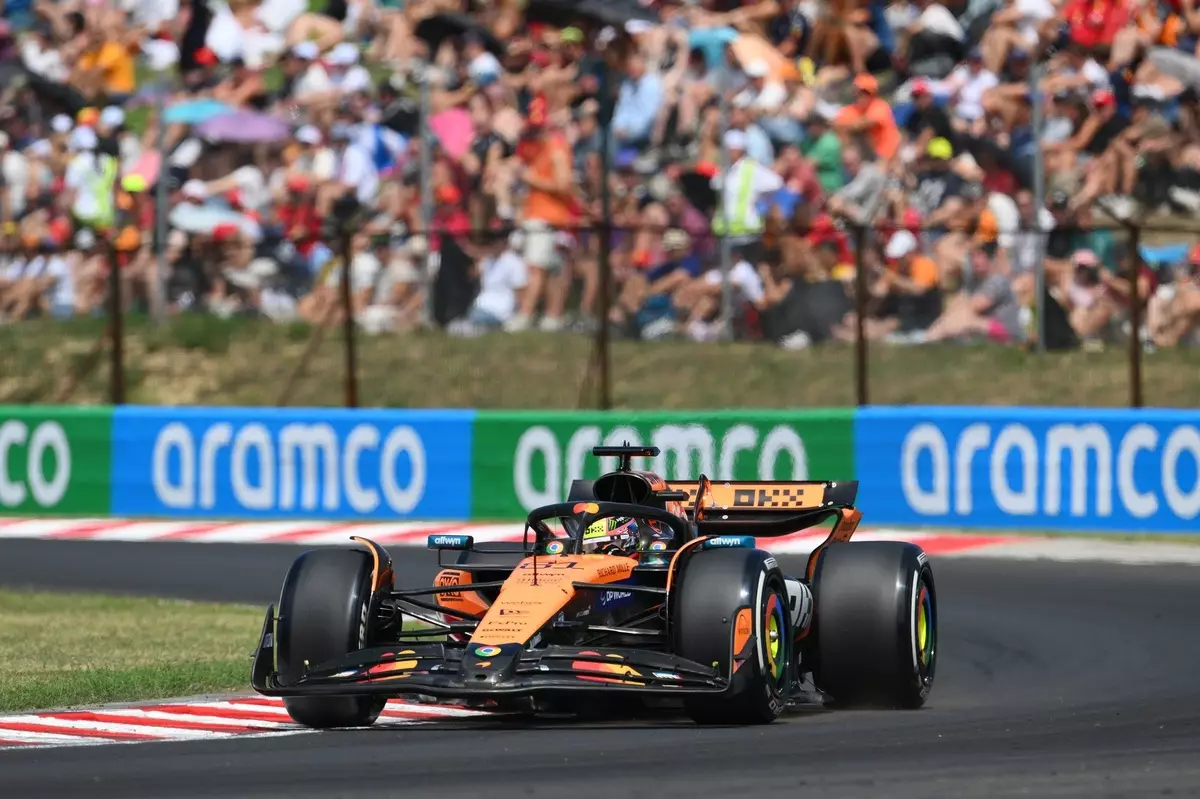In the fiercely competitive landscape of Formula 1, McLaren’s latest display during the Hungarian Grand Prix practice sessions signals more than just a flash of speed; it marks a strategic shift that could redefine racing power dynamics. Oscar Piastri’s jaw-dropping lap of 1:14.916 seconds, achieved on fresh soft tires, is not merely a number but a statement—a declaration that McLaren is rapidly ascending into the realm of serious championship contenders. This effort underscores the importance of calculated risk-taking: Piastri’s choice to push late in the session, with new rubber and a clear focus, underscores a vital lesson in performance optimization. To outperform traditional powerhouses like Red Bull and Ferrari, teams must now be willing to embrace aggressive tactics, leveraging the latest tire technology and subtle aero setups to extract every ounce of potential.
Remarkably, Lando Norris closely followed with a time just over a tenth behind, emphasizing that McLaren’s entire squad is firing on all cylinders. The team’s ability to maximize track conditions during the final minutes not only boosts their confidence heading into qualifying but also shifts the entire narrative of the championship—suggesting that form during practice could be more predictive of race day success than ever before. This bold approach signals a broader strategic evolution within McLaren, focusing on precision, timing, and exploiting every fleeting opportunity—a blueprint that could unsettle their more established rivals.
Strategic Brilliance and Circumstantial Factors at Play
The practice session wasn’t just about raw speed; it was a masterclass in tactical deployment. The decision to switch to soft tires with 15 minutes remaining exemplifies an intelligent understanding of the track’s evolving conditions. Teams that understood the significance of track grip, tire wear, and sector performance gained an invaluable edge, as evidenced by Verstappen’s quick recovery on soft compounds, and Leclerc’s near-miss of a potentially top-tier lap—dipped wheels at a critical moment prevented further progress. These fleeting moments of brilliance are often what separate the best teams from merely good ones, highlighting the importance of timing and risk management.
Ferrari, despite their consistent third-place finishes in practice, demonstrated both strength and vulnerability. Charles Leclerc’s rapid pace indicates Ferrari’s potential but also their fragility—consistently near the top, yet unable to clinch the pole position. Meanwhile, Mercedes’ resurgence, with George Russell and Oscar Piastri’s impressive performances, signals a shift in their car’s characteristics, suggesting that their upgrade path might finally bear fruit. The fact that rookie Kimi Antonelli cracked the top five illustrates how talent and strategic calls are beginning to level the playing field, even as Red Bull’s struggles expose lingering instability in their setup.
This session’s nuances underline that in F1, racing is often decided not just by outright speed but by the subtle interplay of strategy, tire management, and driver execution. McLaren’s dominance in the final moments showcases an appetite to seize the day—an attitude that could pay off significantly in the high-stakes environment of qualifying, and ultimately, the race.
The Power of Innovation and the Battle for Supremacy
While Red Bull’s disappointment with Verstappen and Hulkenberg’s static positions raises eyebrows, it also reflects the complex challenge of balancing speed with consistency. Their current struggle with reliability and setup adjustments serves as a sobering reminder that even the most dominant teams are vulnerable to the unpredictable nature of racing conditions. Yet, it’s in these moments of adversity that true innovation breaks through—teams like McLaren that demonstrate adaptability and strategic clarity will likely capitalize on their rivals’ setbacks.
The practice highlights a broader shift: racing today demands not just raw talent but a meticulous orchestration of every factor influencing performance. As McLaren’s cars tore through the Hungarian circuit, it became apparent that their approach is rooted in understanding their current limitations while aggressively pushing to maximize strengths. This combination of technological prowess and strategic daring not only amplifies their competitiveness but also injects excitement into what was, until recently, a predictable season dominated by Red Bull.
In essence, McLaren’s practice session was more than a showcase of speed; it was a rallying call for other teams to elevate their game. In a sport where milliseconds determine destiny, those who master the strategic use of innovation, tire management, and timing will ultimately secure the glory. And based on this Hungarian evidence, McLaren might just be on the cusp of rewriting the rules of Formula 1 mastery.


Leave a Reply